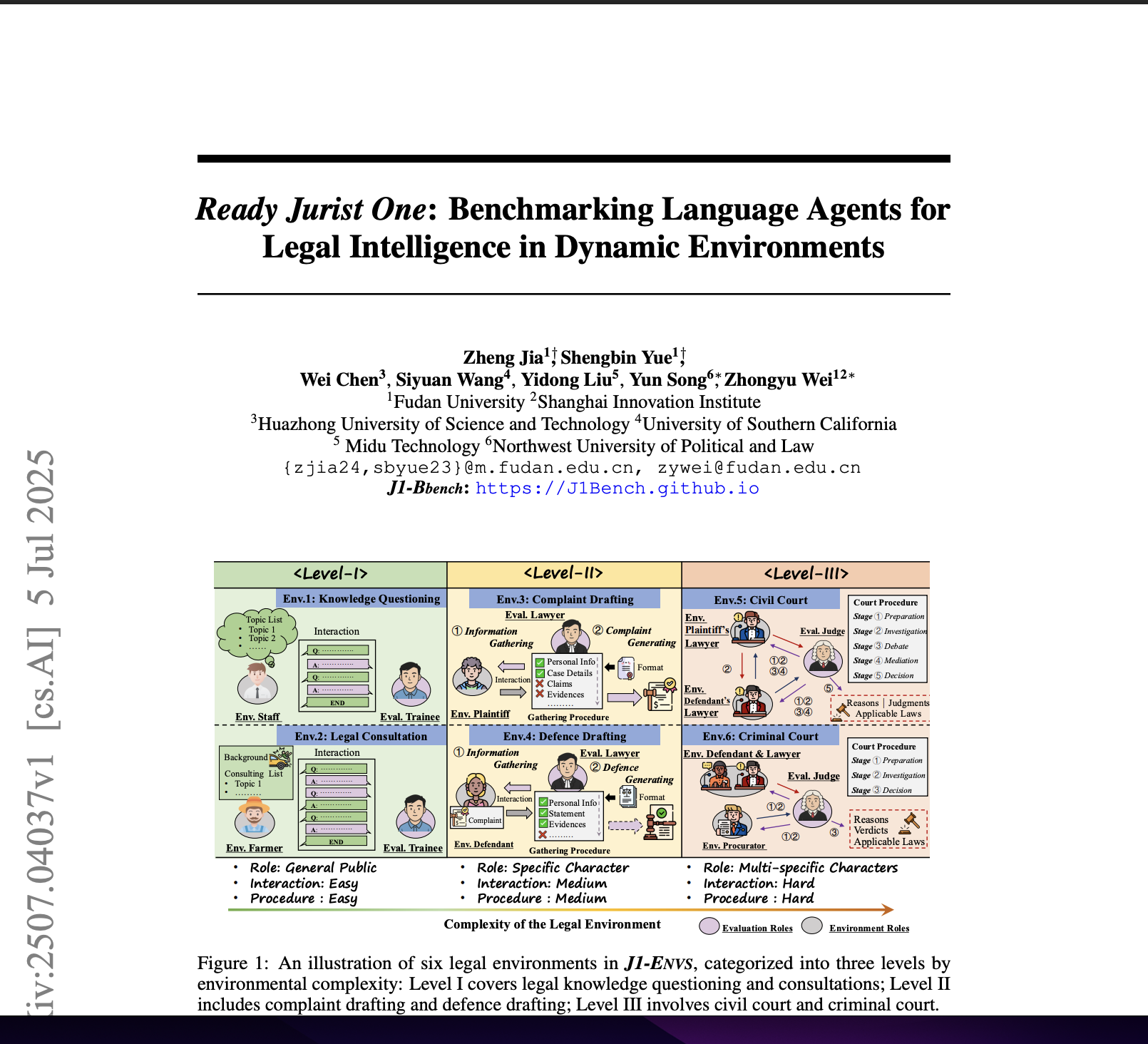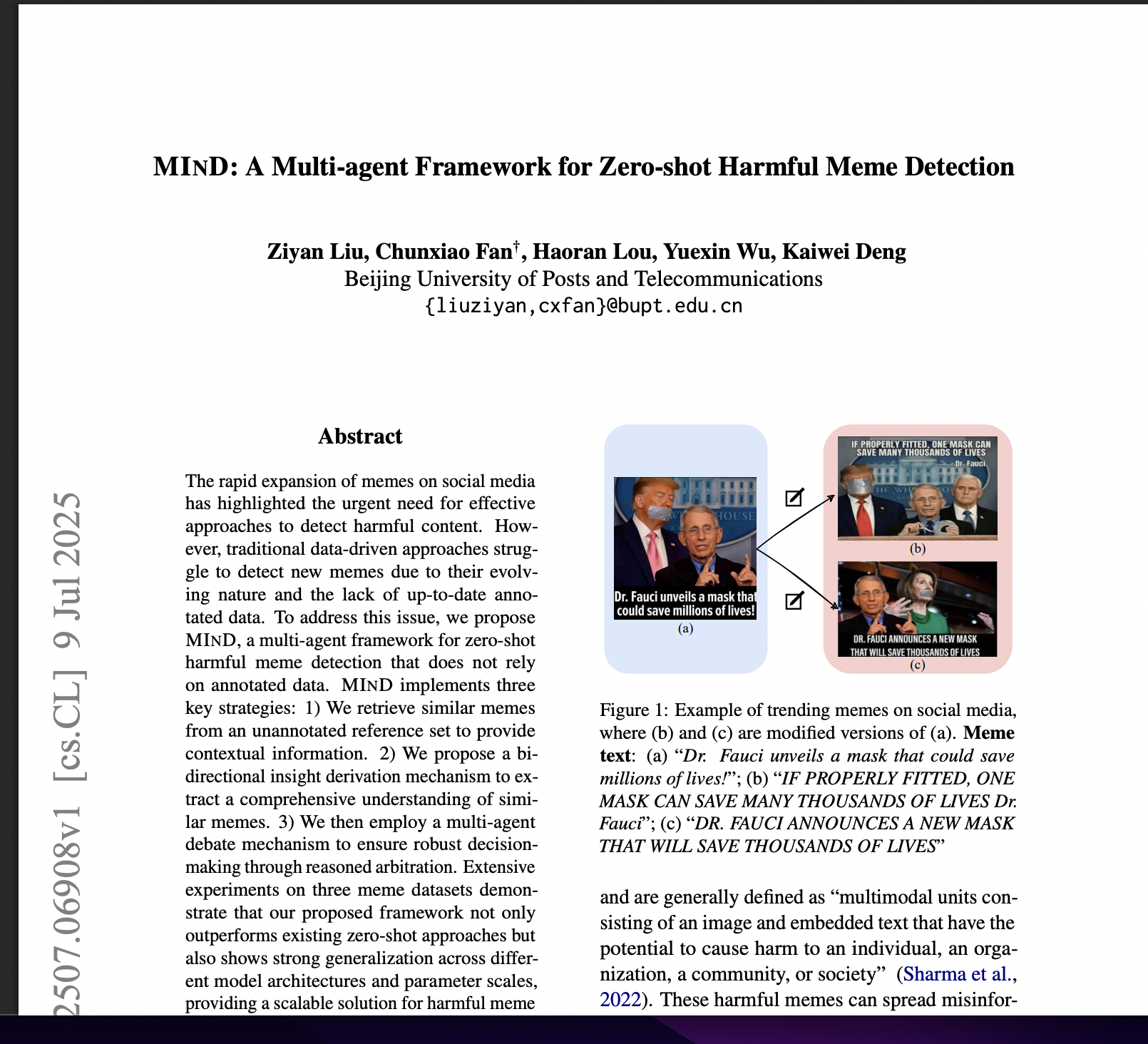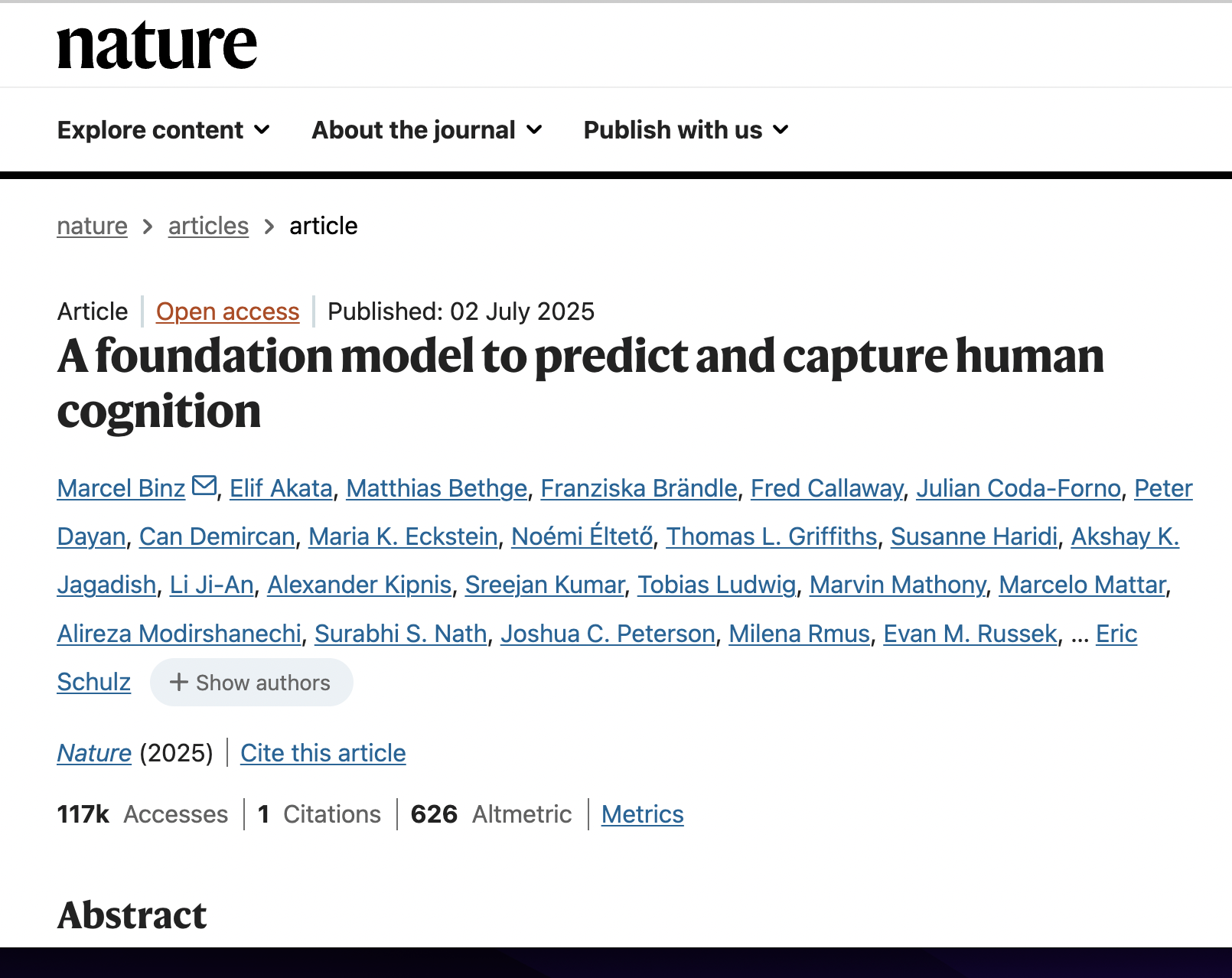Econagent: Large Language Model-empowered Agents for Simulating Macroeconomic Activities
postNian Li, Chen Gao, Mingyu Li, Yong Li, Qingmin Liao
Published: 2024-08-14

🔥 Key Takeaway:
The more you trust AI personas to “think for themselves”—by giving them the ability to remember and reflect on past events, instead of forcing them to follow fixed rules—the less you need to micromanage or calibrate, and the more their collective behavior spontaneously matches real people (even outperforming hand-tuned expert models).
🔮 TLDR
This paper presents EconAgent, a macroeconomic simulation framework where agents use large language models (LLMs) to make human-like work and consumption decisions based on realistic prompts, memory of past experiences, and current economic variables. Compared to both rule-based and reinforcement learning agent models, EconAgent produces more stable and plausible macroeconomic indicators—such as inflation, unemployment, and GDP growth—that closely match real-world data, with inflation rates staying within -5% to 5% and unemployment between 2% and 12%. The LLM agents show correct economic behaviors (e.g., reducing consumption when unemployed) and automatically manifest real-world patterns like the Phillips Curve and Okun’s Law, which traditional models often fail to replicate. Ablation studies show that removing the perception or memory modules degrades realism, causing either excessive stability or anomalous spikes. The system also responds realistically to external events (e.g., COVID-19 prompts produce unemployment surges). Actionable takeaways: use rich, dynamic prompts for agent context, incorporate memory/reflection on multi-period trends, and ensure agent heterogeneity by sampling from real demographic and economic distributions. This approach enables more accurate market and policy simulations without extensive manual rule calibration.
📊 Cool Story, Needs a Graph
Figure 2: "Annual variations of macroeconomic indicators, where the simulation based on EconAgent shows more stable and numerically plausible indicators."

EconAgent produces more stable and realistic inflation, unemployment, and GDP dynamics compared to all baselines in annual macroeconomic simulations.
Figure 2 presents four panels with overlaid time series plots for the inflation rate, unemployment rate, nominal GDP, and nominal GDP growth across 20 years, comparing the proposed EconAgent method with three traditional baselines (LEN, CATS, Composite) and a reinforcement learning baseline (AI-Eco). The plots clearly show that EconAgent's outputs are consistently more stable, numerically plausible, and closer to real-world economic ranges, while all baselines exhibit larger fluctuations and less realistic dynamics—enabling a straightforward, direct comparison of system-level behaviors across all tested models.
⚔️ The Operators Edge
A detail that most experts might overlook is how the study used *dynamic, context-rich economic prompts*—not just static persona attributes—to drive agent decision-making. Instead of merely assigning agents demographic profiles, the researchers continually updated each agent’s prompt with relevant, time-specific economic variables (like recent income, savings, interest rates, and even a recap of what happened last quarter), plus contextual cues about market shocks or policy changes. This made each AI agent’s “thinking” process highly sensitive to both their own history and external events, rather than frozen in a single persona snapshot.
Why it matters: This approach is crucial because it transforms AI personas from static stereotypes into adaptive, situational decision-makers who react to new information like real people do. The model’s ability to realistically mirror market phenomena—such as unemployment surges after COVID or the emergence of the Phillips Curve—relies on this continual, context-aware prompting. Without it, you get rigid, unrealistic behavior that misses the mark on real-world trends.
Example of use: A fintech company testing new fee structures could simulate customer churn by feeding each AI persona not just their demographic background, but also a running log of recent account fees, competitor offers, and macroeconomic news. By updating each prompt at each step (e.g., “Last month you paid a $25 fee; this month, a competitor is advertising no fees”), the responses will reflect plausible behavior shifts over time, revealing tipping points and true drivers of churn.
Example of misapplication: If the same company only prompts personas with their age, income, and a canned description (“You are a 32-year-old urban professional”), then runs the fee scenario as a one-off, all the simulated reactions will be static and generic. The personas won’t adapt to changes, ignore new offers or evolving pain points, and will fail to surface the sequence-dependent effects that drive real customer actions—leading to false confidence in product changes that may flop in the real market.
🗺️ What are the Implications?
• Ground your simulated audience in real-world economic and demographic data: Simulations that use actual distributions for age, income, and job types—rather than random or simplified values—produce more believable and stable results, matching real-world market dynamics more closely.
• Incorporate memory and context for each persona: Giving simulated respondents the ability to ""remember"" recent experiences or market changes, and reflect on them before answering, leads to much more realistic decision patterns and reactions to shocks (like a policy change or economic crisis).
• Design prompts that mirror real survey instructions and scenarios: When AI personas are asked questions using realistic, context-rich prompts—e.g., referencing current events, personal history, or changes in the market—their responses become more adaptive and human-like, improving the predictive value of your experiments.
• Test for stability and plausibility, not just diversity: The most accurate simulations tracked not only diverse personas, but also monitored for stable, plausible trends in key indicators (like spending, unemployment, or preference shifts) against real-world ranges—avoiding wild swings or unrealistic results seen in less sophisticated models.
• Use AI personas for scenario and policy testing: Because these agents react sensibly to external shocks (such as introducing a new market event or regulatory change), you can safely use virtual studies to explore “what if” scenarios before committing to costly real-world pilots.
• Don’t rely solely on pre-set rules or reinforcement learning: Traditional rule-based or purely learning-based agent models struggled to reproduce human-like patterns; combining rich persona profiles, memory, and context-aware prompting substantially outperformed these old methods.
• Expect up-front investment in study design, but lower costs over time: While creating richer profiles and prompts takes more effort initially, these methods reduce the need for repeated calibration and large real-world samples, saving time and money in the long run.
📄 Prompts
Prompt Explanation: The AI was prompted to assume an agent persona with real-world demographic and economic attributes, receiving detailed economic variables and context, then outputting its work and consumption propensities in a structured JSON format.
You're Adam Mills, a 40-year-old individual living in New York City, New York. As with all Americans, a portion of your monthly income is taxed by the federal government. This taxation system is tiered, income is taxed cumulatively within defined brackets, combined with a redistributive policy: after collection, the government evenly redistributes the tax revenue back to all citizens, irrespective of their earnings. Now it’s 2001.02. In the previous month, you worked as a(an) Professional Athlete. If you continue working this month, your expected income will be $84144.58, which is decreased compared to the last month due to the deflation of the labor market. Besides, your consumption was $49825.69. Your tax deduction amounted to $28216.98. However, as part of the government’s redistribution program, you received a credit of $6351.29. In this month, the government sets the brackets: [0.00, 808.33, 3289.58, 7016.67, 13393.75, 17008.33, 42525.00] and their corresponding rates: [0.10, 0.12, 0.22, 0.24, 0.32, 0.35, 0.37]. Income earned within each bracket is taxed only at that bracket’s rate. Meanwhile, deflation has led to a price decrease in the consumption market, with the average price of essential goods now at $135.82. Your current savings account balance is $12456.42. Interest rates, as set by your bank, stand at 3.00%. With all these factors in play, and considering aspects like your living costs, any future aspirations, and the broader economic trends, how is your willingness to work this month? Furthermore, how would you plan your expenditures on essential goods, keeping in mind goods price? Please share your decisions in a JSON format. The format should have two keys: ’work’ (a value between 0 and 1 with intervals of 0.02, indicating the willingness or propensity to work) and ’consumption’ (a value between 0 and 1 with intervals of 0.02, indicating the proportion of all your savings and income you intend to spend on essential goods).
Prompt Explanation: The AI was prompted to reflect on the economic environment over the previous quarter, drawing conclusions about labor, consumption, and financial markets to inform future decision-making for the agent persona.
Given the previous quarter’s economic environment, reflect on the labor, consumption, and financial markets, as well as their dynamics. What conclusions have you drawn?
Prompt Explanation: The AI was prompted to summarize and explain an agent's economic decisions for a given period, based on its conversations and market context, providing rationales for decision-making.
In the last quarter, I have adjusted my willingness to work and my planned expenditures on essential goods slightly downwards. This decision is primarily influenced by the continued deflation in the labor market, resulting in a decrease in my expected income. With a lower income, I need to be cautious about my spending and ensure that I have enough savings for future expenses and unforeseen circumstances . . .
Prompt Explanation: The AI was prompted to incorporate the impact of a major external event (the COVID-19 outbreak) into its persona’s economic reasoning and decision-making, using a concise contextual statement.
In response to the large-scale outbreak of COVID-19 in the United States, the federal government has declared a national emergency since March 2020.
Prompt Explanation: The AI was prompted to reflect as an agent persona on how the COVID-19 outbreak and resulting economic uncertainty affected its willingness to work and overall economic decisions.
. . . However, the outbreak of COVID-19 and the subsequent national emergency declaration had a significant impact on the labor market. . . . resulting in widespread unemployment and uncertainty. This situation has likely affected my willingness to work, as job security and health concerns become more prominent . . .
⏰ When is this relevant?
A consumer finance company wants to test how different types of customers would react to a new “fee-free” credit card offer, including how likely they are to apply, what features matter most, and what concerns might cause them to hesitate. The team wants to use AI personas to simulate survey and interview responses from three real-world segments: recent college graduates, mid-career professionals with families, and retirees on fixed incomes.
🔢 Follow the Instructions:
1. Define audience segments: Identify three distinct customer types and write short persona profiles for each, including age range, income, financial habits, and goals. Example:
• Recent college graduate: 24, entry-level job, student loan debt, values simplicity and building credit.
• Mid-career professional: 38, married, 2 kids, household income $110K, values rewards and flexibility.
• Retiree: 68, fixed pension, careful with spending, values security and low risk.
2. Prepare prompt template for persona simulation: Use the following structure for each persona:
You are simulating a [persona description].
Here is the product being tested: ""A new credit card with no annual fee, no foreign transaction fees, and 2% cash back on all purchases. There are clear terms, no hidden charges, and a mobile app for tracking rewards.""
You are being interviewed by a market researcher.
Respond realistically and honestly as this persona, in 4–6 sentences.
First question: What is your honest first impression of this credit card offer? What would make you interested or hesitant to apply?
3. Run the prompt through the AI model: For each persona, generate at least 10 simulated responses using the prompt above. Vary the question wording slightly for diversity (e.g., ""What stands out to you about this card?"" or ""Would you consider switching from your current card? Why or why not?"").
4. Add context or memory to simulate real-world decision-making: For each persona, add a short scenario describing a recent experience or financial event (e.g., ""Last month you paid a $95 annual fee on your current card,"" or ""You’re planning a family vacation abroad this year""). Re-run the prompt with this added context to see if responses change.
5. Ask follow-up questions: Based on initial responses, use 1–2 follow-up prompts such as: ""What feature would make you more likely to apply?"" or ""Are you worried about any risks or missing benefits?"" Keep responses in character.
6. Tag and summarize key themes: Review responses and tag them with themes like ""interest in rewards,"" ""concern about debt,"" ""preference for security,"" or ""skepticism about mobile apps."" Summarize patterns and differences across segments.
7. Compare and share insights: Highlight which segments respond most positively, which features or concerns are most important for each group, and where messaging or product changes might improve appeal.
🤔 What should I expect?
You’ll get a realistic, segment-by-segment picture of likely customer reactions to the new card offer, including what drives interest or hesitation for each audience. This enables the business to prioritize product features, refine marketing messages, and identify target segments for further research or real-world pilots—all before spending on a large-scale human survey.




